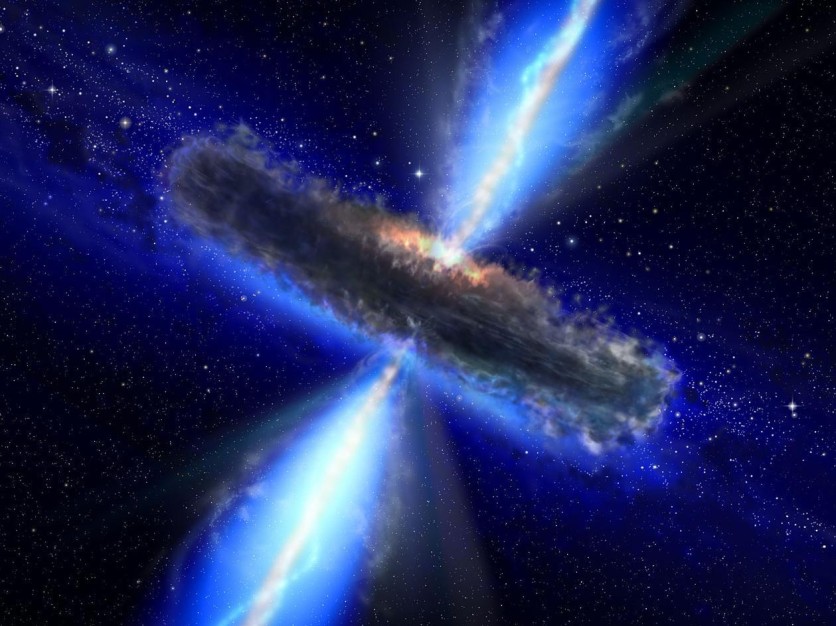Astronomers might have found the answer to why supermassive black holes emerge in our galaxies, such as in our Milky Way.

IN SPACE: In this handout from NASA/ESA, an artist's concept illustrates a quasar, or feeding black hole. NASA's Wide-field Infrared Survey Explorer (WISE) revealed millions of potential black holes in its survey of the sky in 2011.
"Blackholes like Fireflies"
The interest in black holes seems to have accelerated these days as a new study showed how it is observing the evolution of black holes found in dwarf galaxies, weeks after the first photo of the Milky Way's monster black hole "Sagittarius A*" was released.
The new study revolving around dwarf galaxies came up with a survey that suggested black holes emerge more commonly within these small galaxies, reported first by Space.com.
The team of astronomers behind the study said that their findings could fill the gaps of knowledge in learning more about how supermassive black holes evolve.
Lead author Mugdha Polimera and a Ph.D. student at the University of North Carolina-Chapel Hill stated in a university statement that the results "really blew" her mind "because these black holes were previously hiding in plain sight."
Meanwhile, advisor and coauthor Sheila Kannapan and UNC-Chapel Hill's Professor said that these black holes were like fireflies.
"Just like fireflies, we see black holes only when they're lit up - when they're growing - and the lit-up ones give us a clue to how many we can't see," Kannapan said in their university's press release.
Mergers of Dwarf Galaxies
The massive Sagittarius A*(Sgr A*) black hole found in our Milky Way is believed to have originated from gradual mergers of smaller dwarf galaxies, similar to the Magellanic Clouds that are spiraling towards an emerger.
"Each dwarf that falls in may bring with it a central massive black hole, tens or hundreds of thousands of times the mass of our sun, potentially destined to be swallowed by the Milky Way's central supermassive black hole," the authors said
It was particularly challenging for the astronomers to find the black holes since they can only be viewed through the radiation that they produce. As noted by Space.com, the high energy emerging from growing black holes can look like newborn stars, which makes it difficult to differentiate them without a detailed spectrum.
Hence, astronomers proposed the use of the all-sky Sloan Digital Sky Survey's emission line catalog. Emission lines are the bright lines found in the spectra of stars.
The astronomers particularly used photoionization, which is a phenomenon where an atom is electrically charged while radiant energy is absorbed.
Furthermore, the team employed two sets of astronomical surveys from the catalog that comprise large groups of dwarf galaxies instead of the biggest and brightest galaxies.
Through studying the hydrogen and helium prevalent in dwarf galaxies, the team compared multiple elemental combinations and confirmed the study with theoretical simulations.
The authors concluded that their tests closely matched predictions for which dwarf galaxies hold black holes in them. Further results of the study can be found in The Astrophysical Journal.
Related Article : NASA's Hubble Telescope Looks Into 'Needle's Eye' of Dwarf Spiral Galaxy With Strange Void
This article is owned by Tech Times
Written by Joaquin Victor Tacla




